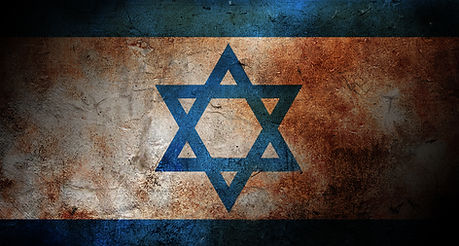South West Asia
 |  |  |
|---|---|---|
 |
Southeast Asia generally encompasses Cambodia, Laos, Burma, Thailand, Vietnam, Malaysia, Brunei, Indonesia and the Philippines. Important martial arts that take their histories from the region are pentjak silat, arnis/escrima, kali, muay boran, krabi krabong, muay Thai and vovinam.
In the 1400s, two major silat martial arts arose out of Southeast Asia: Indonesia’s pentjak silat (created by Malay female Rama Sukana) and Malaysia’s bersilat. The snake-shaped bladed knife kris was an important weapon in pentjak silat. In A.D. 200, Malaysians introduced the kris to the Philippines, which was adopted by the Moro people. In the 1500s, the Moro people combined their kris skills with Spanish fencing and applied them to rattan sticks to create arnis/escrima. The bladed art of kali was eventually developed from these arts.
The most well-known martial art of the region is probably muay Thai, which began in 1930. It takes its origins from the more lethal muay boran, which in turn came from the stick-and-sword-fighting art of krabi krabong. In 1560, King Nareusan was captured by the Burmese. To obtain his release, he defeated the top Burmese boxers. This was the birth of muay boran. Most major Burmese martial arts—bando, banshei, lethwei, naban— arose between 1200 and 1300.
After the French conquered Vietnam, they outlawed martial arts. In 1912, Nguyen Loc started a martial arts movement that created today’s Vietnamese martial art known as vovinam Viet do dao.



Aikido's founder, Morihei Ueshiba, was born in Japan on December 14, 1883. As a boy, he often saw local thugs beat up his father for political reasons. He set out to make himself strong so that he could take revenge. He devoted himself to hard physical conditioning and eventually to the practice of martial arts, receiving certificates of mastery in several styles of jujitsu, fencing, and spear fighting. In spite of his impressive physical and martial capabilities, however, he felt very dissatisfied. He began delving into religions in hopes of finding a deeper significance to life, all the while continuing to pursue his studies of budo, or the martial arts. By combining his martial training with his religious and political ideologies, he created the modern martial art of Aikido. Ueshiba decided on the name "Aikido" in 1942 (before that he called his martial art "aikibudo" and "aikinomichi").
Japan



Japanese Jiu Jitsu or Jujitsu, Ju-Jitsu, Jiu-Jutsu (roughly meaning Ju=gentle, Jitsu=art) is a close quarters Japanese martial art. Many of the techniques associated with Jiu-Jitsu can be traced back many many centuries through India, China and Japan and then later developed by Samurai for their unarmed combat fighting requirements. The art uses mainly joint locks, chokes and throws using the attackers own force against them.
The first Ryu Jiu-Jitsu school was started by Hisamori Takenouchi in 1532. His system was developed to help immobilise warriors with grappling and short weapons on the battlefield, as striking systems were found to be ineffective against those wearing armour.
As with other martial arts, there are many different systems which have developed over a long period of time. Some of these systems employ striking techniques and weapons use, while others concentrate on non-striking moves. Many can be clearly traced and recognised as being Jiu-Jitsu based, such as BBJ and Aikido, while others such as Judoconcentrate more on the throwing/grappling aspect of the art.
The art has been and still is very popular with both the military and police authorities throughout the world and is now a very popular addition to hybrid fighting systems formixed martial arts.
Some of the organisations include:
Jiu-Jitsu International Federation (JJIF), All Jiu-Jitsu International Federation (AJJIF), Jiu-Jitsu Federation of Japan (JJFJ), Australian Jujitsu Federation (AJJF), American Judo and Jujitsu Federation (AJJF), United States Jujitsu Federation (USJJF), World Ju-jitsu Federation (WJJF), British Ju Jitsu Association National Governing Body (BJJAGB), Combat Ju-Jutsu International Federation (CJJIF).
The basis of Krav Maga (hebrew for contact combat or hand-to-hand combat), was created by Imi Lichtenfeld in the late 1930’s. Imi was born in Budapest, Hungary and grew up in Slovakia and was a keen champion wrestler. Imi developed his fighting skills while fighting anti-Semitism and fascists in Slovakia, but later moved to Israel in the late 40’s, where he began to teach his system to paramilitary organisations and then later to the Israel Defence Force. The fighting system is made up of many different styles and includes some moves from Boxing, Muay Thai, Kickboxing,Karate, wrestling and many more styles. It has developed over the years like most martial arts and in different directions depending on the school teaching it.
Krav Maga is popular amongst those wishing to learn how to fight in a real world combative/street fighting system and therefore practised by many police and military forces throughout the world.
There are a number of organisations, such as the, International Krav Maga Federation (IKMF), Krav Maga Global (KMG), International Krav Maga (IKM),
Israeli Krav Maga Association (IKMA), Federation of European Krav Maga (FEKM), Krav Maga Academy Slovenia (KMAS), Krav Maga Worldwide (KMW), Krav Maga Alliance (KMA), South American Federation of Krav Maga (SAFKM).
Isreal




